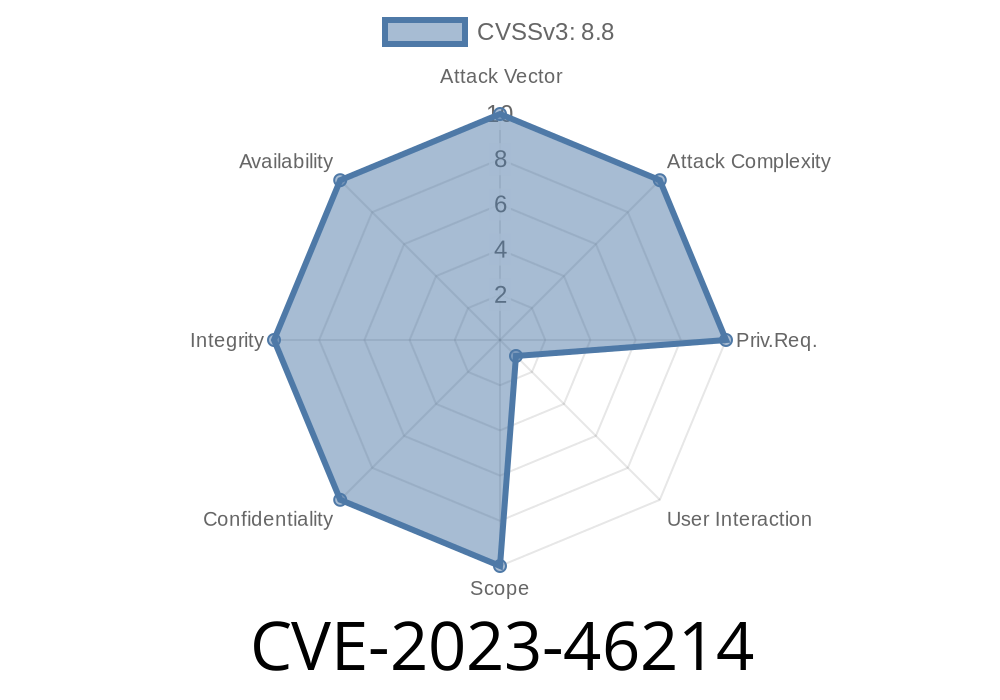In this post, we will be discussing a critical vulnerability that was discovered in Splunk Enterprise versions below 9..7 and 9.1.2. The vulnerability, which has been assigned the unique identifier CVE-2023-46214, allows an attacker to bypass XSLT sanitization, leading to remote code execution. We will be covering the details of the exploit, providing a code snippet to illustrate the issue, and offering links to original references for further understanding.
Exploit Details
Splunk Enterprise is a popular data collection and analysis platform used by many organizations for security, IT operations, and other purposes. However, Splunk fails to safely sanitize extensible stylesheet language transformations (XSLT) that users can upload, resulting in the possibility of remote code execution on the instance.
An attacker with access to the upload functionality can craft a malicious XSLT (XML stylesheet) that contains arbitrary code and submit it to the Splunk server. The server then applies the XSLT to transform the data it processes, inadvertently executing the embedded code – and granting the attacker the ability to execute code on the machine running the Splunk instance.
This vulnerability poses a significant risk to organizations who use Splunk, and it is strongly recommended that affected users patch their installations to the latest version as soon as possible.
Code Snippet
The following snippet is a simplified example of an XSLT file that contains malicious code. Keep in mind that this is just for illustrative purposes and real-world exploits will likely be more sophisticated.
<?xml version="1." encoding="UTF-8"?>
<xsl:stylesheet version="1."
xmlns:xsl="http://www.w3.org/1999/XSL/Transform">;
<xsl:variable name="maliciousCode" select="'myShellCommand.exe --maliciousArgs'" />
<xsl:template match="/">
<xsl:for-each select="/myData">
<xsl:value-of select="document(concat(translate($maliciousCode, "'", ''')))"/>
</xsl:for-each>
</xsl:template>
</xsl:stylesheet>
In the snippet above, the attacker defines a variable that contains the shell command they wish to execute, and then uses the XSLT document() function and the translate() function to facilitate the execution of the malicious payload. Once the XSLT is applied to the data, the code is executed with the same privileges as the Splunk instance.
References
The following resources offer more detailed information about CVE-2023-46214 and how to protect your organization from the vulnerability:
1. Splunk Security Advisory: https://www.splunk.com/en_us/security-advisories/splunk-security-advisory-2023-46214.html
2. Splunk Upgrade Recommendations: https://docs.splunk.com/Documentation/Splunk/latest/Installation/HowtoupgradeSplunk
3. CVE Details Official Record: https://cve.mitre.org/cgi-bin/cvename.cgi?name=CVE-2023-46214
Conclusion
In conclusion, CVE-2023-46214 is a critical vulnerability present in Splunk Enterprise versions below 9..7 and 9.1.2 that allows an attacker to exploit the platform's lack of proper XSLT sanitization and gain remote code execution privileges on the affected server. To protect your organization, it is crucial to upgrade to a version of Splunk Enterprise that is no longer susceptible to this exploit.
Timeline
Published on: 11/16/2023 21:15:08 UTC
Last modified on: 12/12/2023 16:15:08 UTC
